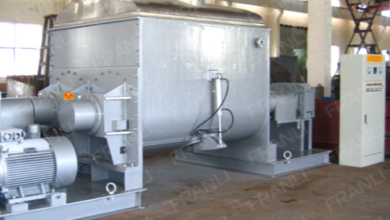Kitchener Waterloo Housing Market Trends and Forecast 2025

The Kitchener Waterloo housing market in 2025 is showing signs of moderation with a slight decrease in average home prices compared to the previous year. While the market experienced a 2.9% drop in residential sale prices, reaching approximately $750,000, the increase in available inventory offers more choices for buyers. Sales activity has softened but remains relatively stable across most property types.
Inventory levels are notably higher than the ten-year average, providing a more balanced market and reducing competitive pressure on buyers. This shift suggests a slower pace compared to past years but creates opportunities for those looking to enter the market or invest.
Sales figures reveal a subtle shift in buyer preferences, with apartment units seeing some growth, while townhouses and single-family detached homes saw slight declines. These trends point to evolving demand and reflect a market adapting to changing economic conditions and buyer priorities.
Kitchener Waterloo Housing Market Overview
The Kitchener Waterloo housing market in 2025 shows mixed activity, with fluctuations in sales, inventory, and pricing. Buyers face more choices due to rising listings, but overall home sales have declined compared to the previous year. Property types vary in sales trends, reflecting shifting buyer preferences.
Current Market Trends
Sales volume in Kitchener Waterloo has decreased, with residential transactions dropping by approximately 10.6% year-over-year in the first seven months of 2025. The slowdown is uneven across property types: single detached homes fell slightly, townhouses and row units saw more significant declines, while apartment sales experienced modest growth.
Inventory levels have increased by 8%, providing more options for buyers. Active listings are near or above the ten-year average, creating a more balanced market. This rise in supply, combined with less aggressive sales, has contributed to a shift away from a seller’s market.
Average Home Prices
The average residential sale price has decreased by about 2.9% year-over-year, from $773,583 to roughly $750,419 between January and July 2025. This reflects a moderate cooling from the previous year’s peak prices. Price adjustments vary by property type, with lower demand impacting townhouses and detached homes more than apartments.
Condominium prices remain relatively stable and have benefited from rising sales, offering a more affordable entry point for buyers. Overall, the trend signals cautious buyer behavior amid rising choices and a slight price correction.
See also: Financing for Small Businesses Explained: Key Options and Strategies for Success
Types of Properties Available
The housing stock includes single detached homes, townhouses, row units, apartments, and condominiums. Sales of single detached homes have declined slightly, while townhouses and row units have experienced sharper drops. Apartments and condos have seen sales increases, with condos popular for affordability.
Listings have grown across all types, but the most significant inventory rise is in detached and townhouse segments. This increase partly explains the slower sales pace. Buyers now have a wider selection of property types, especially those seeking lower-cost or multifamily options.
Factors Shaping Kitchener Waterloo Real Estate
Several key elements influence the Kitchener Waterloo housing market, impacting prices, inventory, and buyer behavior. Economic trends, demographic shifts, and planned developments all play significant roles in shaping demand and supply.
Economic Drivers of Demand
Rising interest rates have led many buyers to favor multifamily properties, as rental income can offset mortgage costs. The local economy remains robust, supported by strong technology and manufacturing sectors that sustain employment and wage growth.
Kitchener Waterloo’s economic stability attracts investors and homebuyers looking for secure markets. Despite a recent slight decline in average home prices, demand persists due to steady job growth and diverse industry presence. These factors contribute to relatively balanced dynamics between buyers and sellers.
Population Growth and Demographics
The region continues to experience steady population growth, driven by immigration and relocation from larger cities. Young professionals and families are the largest demographic groups fueling housing demand, particularly for affordable multifamily and single-family homes.
The area’s universities and tech hubs attract a skilled workforce, increasing demand for rental and ownership housing. This demographic mix influences market preferences, pushing demand for diverse housing types to accommodate various household sizes and income levels.
Upcoming Developments
Several large residential and mixed-use projects are underway or planned, aimed at expanding housing supply and infrastructure. These developments focus on increasing inventory, especially in multifamily units, to meet rising demand.
Local government initiatives promote transit-oriented communities, improving connectivity and access to amenities. This development strategy is expected to enhance neighborhood desirability and long-term market stability by attracting both residents and businesses.




